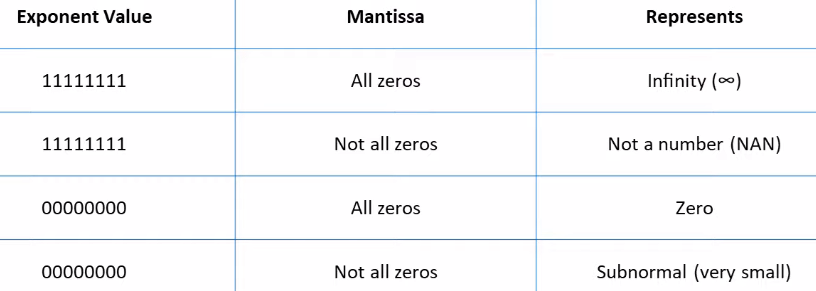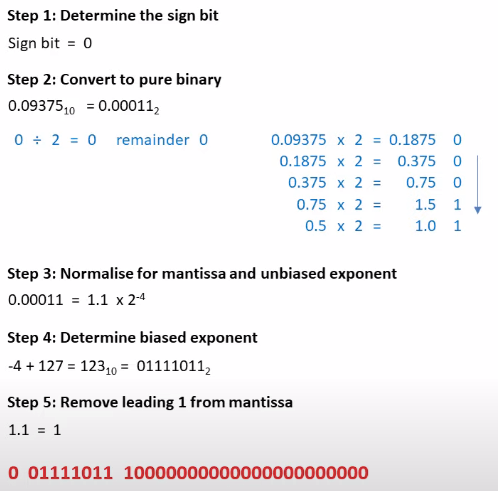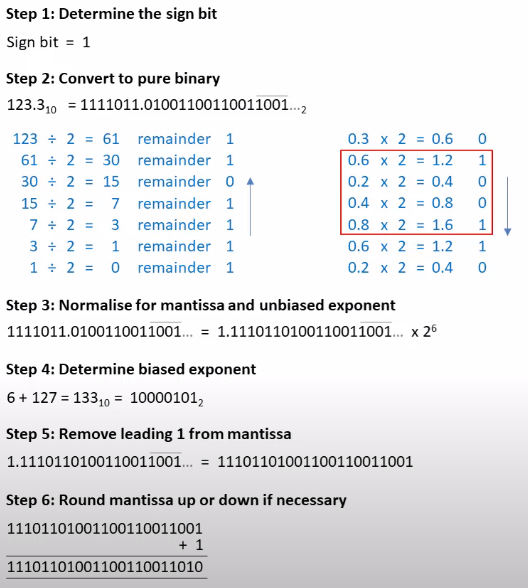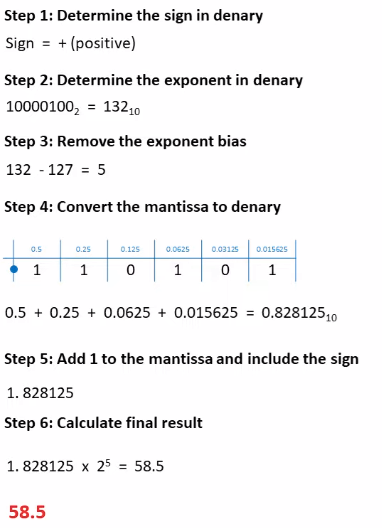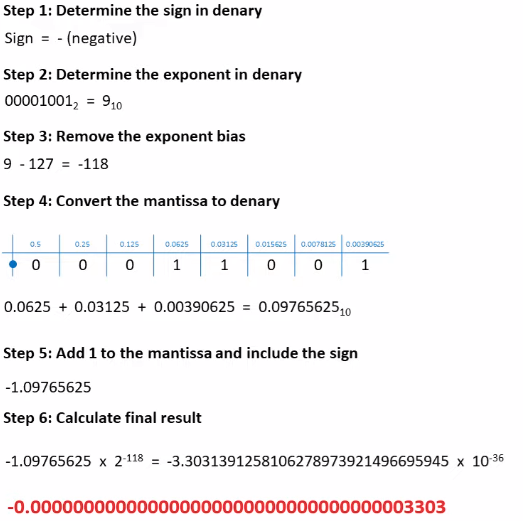Status: Tags: #aCards/cmpt295/binary Links: Binary Float Byte Structure
IEEE Float Representation
Principles
- signed bit
Steps
?
- Find binary equivalent of number through /2 method
- Bottom to top for int
- Top to bottom for fractional
- Move decimal to right of leading 1, find scientific notation
- Positive if you have to go right to go back to original
- Mantissa (M) = exponent
- Find bias
- Add 127, convert to binary
- Remove leading 1, round mantissa up or down
Form
? Binary numerical form ;; $V = (-1)^s M2^E$
Calculating E, bias, M, normalized ?
- S is signed bit
- Exponent shifts decimal, is not multiplied by $2^E$
- E = exp - bias
- ex) if exp = 001 and bias = 3, then 1 - 3 = -2
- (E for 6-bit representation)
- ex) if exp = 001 and bias = 3, then 1 - 3 = -2
- bias = $2^{k-1} - 1$
- ex) if k=2 (6-bit representation), bias would be 4-1 = 3
- M = 1 + frac
- ex) 1.frac
Calculating E, bias, M, denormalized ?
- E = 1 - bias
- *ex) 1 - 3 = -2, E for 6-bit representation
- bias = $2^{k-1} - 1$
- ex) if k=2 (6-bit representation), bias would be 4-1 = 3
- M = frac
- ex) .frac
- Move decimal to left most 1, count number of movements
- Movements is unbiassed exponent
- Resulting number is mantissa
- Determine biased exponent
- Remove leading 1 from mantissa
- 1 is always real, so no need to store
- pad with 0’s
Float
Special Cases (all 0/1)
Double
Examples
Convert 2. Conver to pure binary - Multiply by 2, mod 1 for binary value - Keep going until 0 - Read top to bottom
Convert Decimal to IEEE
- When you notice that the dividend was previously encountered, it means a repeating number
Convert IEEE to Decimal
Backlinks
|
|
References:
Created:: 2022-01-21 14:51




